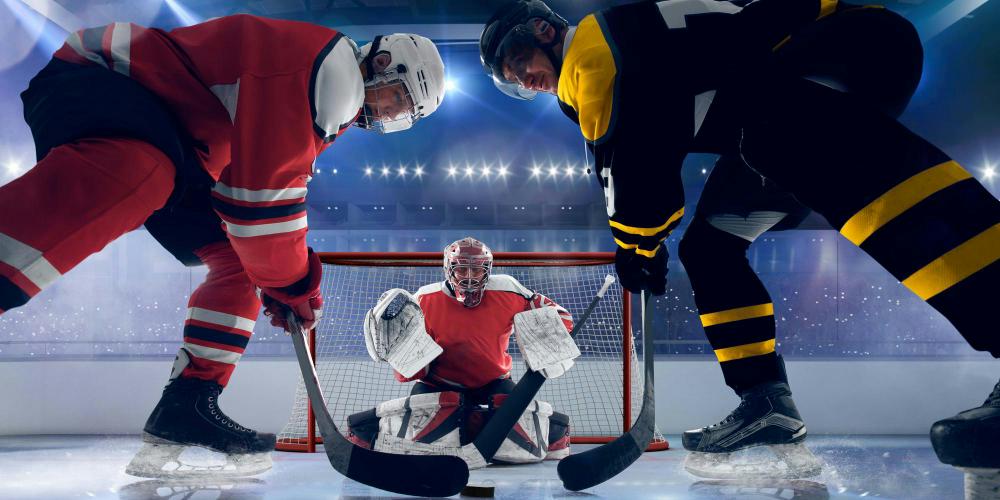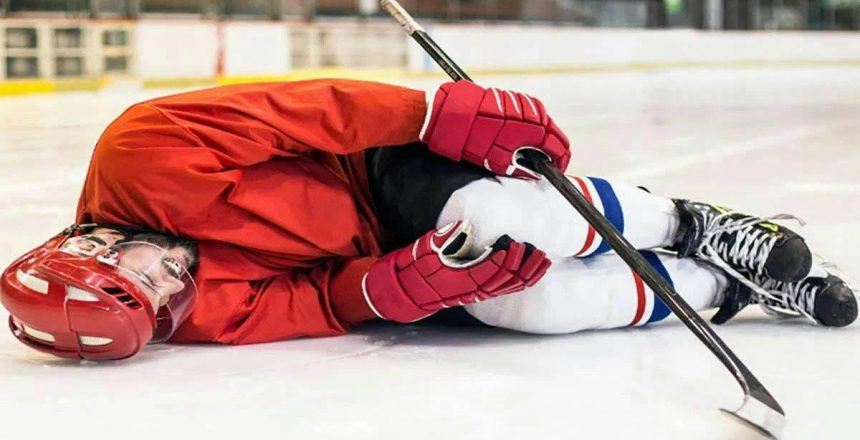Introduction
Hockey, a thrilling sport on ice or field, is not without its risks. As players glide and compete, injuries become an inevitable part of the game. In this article, we will explore the most common hockey injuries, exploring their causes, treatments, prevention strategies, and more.
For specialized sports recovery in San Diego, consider making an appointment at Scripps Ranch Physical Therapy.
What Are The Causes of Hockey Injury?
Understanding the specific causes is crucial for players and enthusiasts, especially in preventing severe injuries. Let’s break down the primary factors contributing to hockey injuries:
Intense Physical Contact: Hockey’s physical nature, marked by frequent body checks and collisions, significantly increases the risk of injury, ranging from muscle strains to fractures.
Swift and Unpredictable Movements: Players frequently make fast and unpredictable moves, like sudden stops and quick turns, which strain muscles and joints, elevating the incidence of injuries, such as strains and sprains.
High-Speed Puck and Stick Play: The game’s key components, like high-speed pucks and stick maneuvers, introduce unpredictability. This dynamic setting can lead to injuries such as cuts, bruises, and facial injuries, including dental injuries.
Impact with the Boards: In ice and field hockey, players’ board contact can cause injuries, especially to the shoulders, head, and limbs.
Competitive Stress and Fatigue: As the game’s intensity rises, players may undergo increased stress and fatigue. This mental and physical exhaustion can compromise coordination and focus, heightening susceptibility to injuries.
What Are Common Hockey Injuries?

Now, let’s delve deeper into each common hockey injury and understand its characteristics, implications, and the specific type of injury it entails.
Muscle Strains and Sprains
One of the frequent issues hockey players face is muscle strains and sprains, with abrupt movements and quick turns putting immense pressure on muscles, often leading to strains and the specific concern of ankle sprain.
Concussions
With the fast-paced and physical nature of the game, concussions are a real concern, being a common type of head injury. Collisions, falls, or contact with the puck can result in these head injuries, demanding immediate attention.
Fractures
Hockey involves intense physical contact, making fractures, especially stress fractures in limbs, a common occurrence, particularly in injuries in ice hockey. These injuries require prompt medical intervention for proper healing.
Cuts and Bruises
Blades, sticks, and high-speed play contribute to cuts and bruises in hockey, including field hockey injuries. While they may seem like minor injuries, they can hinder performance and escalate if not treated properly
Shoulder Injuries
Shoulder injuries are prevalent due to the frequent use of hockey sticks and the physicality of the sport, especially during maneuvers like the shoulder check. Dislocations and strains are common among players.
Lower Back Injuries
The lower back undergoes strain from constant bending and rapid movements, making it susceptible to musculoskeletal injuries that need careful management.
Ankle Injuries
The ankle, bearing the brunt of rapid direction changes and sudden stops, is prone to sprains and twists, affecting a player’s agility and potentially leading to ankle fractures.
Knee Injuries
Knees are vulnerable to injuries in hockey, often caused by sudden stops, pivots, or collisions, affecting the knee joint. Ligament strains and tears are typical concerns.
Groin Injuries
The quick lateral movements in hockey make the groin susceptible to strains, a common concern known as groin strain. These injuries can be painful and may require extended recovery periods.
Face and Mouth Injuries
High-speed pucks and sticks pose a risk to the face and mouth, leading to injuries that range from minor cuts to more severe dental issues, emphasizing the importance of using a mouth guard for protection.
Treatment for Hockey Injuries

In the unfortunate event of a hockey injury, swift and appropriate treatment is crucial for effective recovery, especially considering the various types of injuries that can occur. Here are five key steps:
Immediate First Aid: Address the injury promptly with basic first aid measures on the field or rink, especially crucial for professional players. This may involve applying ice, immobilizing the affected area, or using compression to control bleeding.
Professional Medical Evaluation: Seek professional evaluation from a qualified healthcare provider experienced in sports injuries. This step is crucial for obtaining timely medical attention, as they can assess the severity and recommend a personalized treatment plan.
Rest and Rehabilitation: Allow the injured area to heal by following a rest period, a key recommendation supported by prospective studies. Rehabilitation exercises, guided by a physiotherapist, can promote healing and restore functionality.
Medication for Pain Management: In some cases, prescribed pain management medications may be necessary, particularly when considering the severity of injury. Always follow the recommended dosage and consult a healthcare professional before taking any medication.
Physical Therapy and Gradual Return: Engage in physical therapy, guided by a physical therapist, to strengthen muscles and improve flexibility. The return to play should be gradual, following the advice of healthcare professionals to minimize the risk of re-injury.
Injury Prevention Strategies
Preventing injuries is crucial to ensuring a safe and enjoyable experience in hockey. Let’s delve into specific strategies to minimize the risk of injuries:
Wear Proper Protective Equipment
Invest in quality protective gear like helmets, pads, and mouthguards that meets safety standards. It significantly reduces the impact of collisions and falls, promoting player safety.
Maintain Proper Conditioning
Prioritize overall fitness and conditioning. A well-conditioned body is more resilient to the physical demands of hockey, reducing the likelihood of strains and fatigue-related injuries.
Master Proper Technique
Proper technique is fundamental in preventing injuries. Coaches should emphasize correct playing techniques, including skating, shooting, and checking, to reduce the risk of accidents.
Warm Up and Cool Down
Warm up with dynamic stretches before the game and cool down afterward to prevent muscle strains and enhance flexibility, reducing injury risks.
Stay Hydrated and Nourished
Hydrate and eat well to prevent injuries. Dehydration can lead to fatigue and impaired concentration, increasing accident risks. Maintain a balanced diet for overall health and sustained energy.
Report Injuries Promptly
Encourage open communication on injuries. Players should report any discomfort promptly to the coaching staff and seek medical evaluation to prevent minor issues from becoming significant problems.
Follow Return-to-Play Guidelines
For players recovering from injuries, adherence to return-to-play guidelines is essential. Rushing back into the game without proper recovery increases the risk of re-injury.
Make an Appointment at Auto-Ness Physical Therapy For Hockey Injuries

For specialized care and recovery from hockey injuries in San Diego, consider making an appointment at Auto-Ness Physical Therapy. Our experienced team, well-versed in San Diego sports medicine physical therapy, understands the unique challenges posed by hockey injuries. We tailor treatment plans for a swift and effective recovery.
Conclusion
In the dynamic world of hockey, injuries are part and parcel of the game. However, with awareness, proper care, and preventive measures, players can minimize the impact of these injuries and enjoy the sport safely.
FAQs
Q1: What is the injury rate in hockey?
A1: The injury rate in hockey varies based on the level of play and specific factors. Generally, studies show that injuries are not uncommon, with contact levels and game intensity influencing the rates. Almost all injuries (92.8%) were sudden and happened consistently over the 7-year study period.
Q2: Are head injuries common in hockey?
A2: Head injuries can occur in hockey due to collisions, falls, or contact with equipment, raising the question: what is the most common injury in hockey? While the incidence is not uncommon, the sport has implemented measures like mandatory helmet use to mitigate the risk.
In men’s professional hockey, head injuries are most common (17%), followed by thigh (14%) and knee (13%). For women, concussions were also the most common injury (121 cases), followed by hip/groin (54) and ankle (28) ligament injuries.
Q3: What hockey position gets injured the most?
A3: Injuries are distributed across positions, but certain studies suggest that defensemen may face a higher risk due to their involvement in physical play and frequent challenges near the boards. However, various factors can influence injury rates, and individual experiences may vary.


